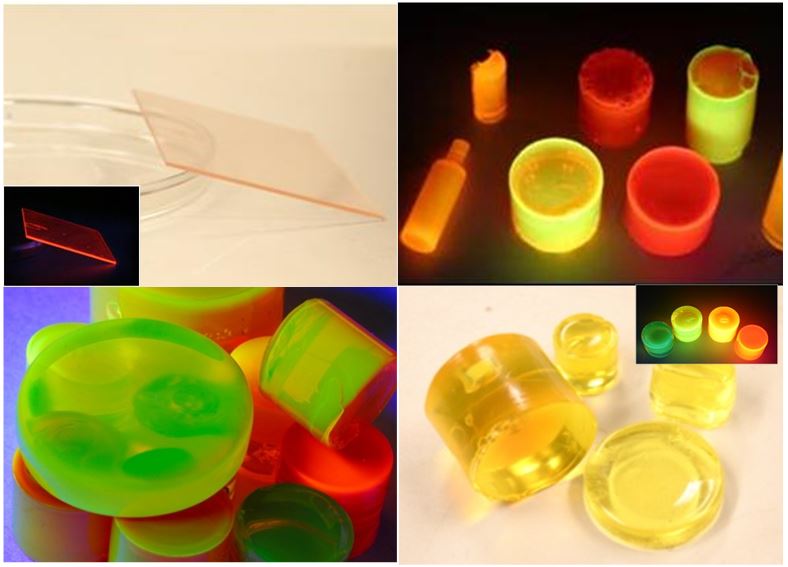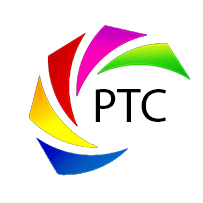Scintillators
A scintillator is a term generally used to describe materials that exhibit scintillation and emit fluorescent light when exposed to ionizing radiation such as X-rays and Gamma-rays. Most scintillators are based on inorganic phosphors while others can be organic-based such as plastic scintillators. In order to achieve high density and optical transparency, some phosphors can be made into single crystal scintillators. However, this approach is generally expensive and limited to small area radiation detectors.
Phosphors and Nanophosphors

Nanocrystal Scintillators in Polymers (Image Credit: Georgia Tech)
Phosphor powders can be used to fabricate lower-cost and large-area scintillating sheets or screens for a wide range of radiation imaging applications. Phosphor screens made from micron-sized phosphors can efficient and bright X-ray converters, for example. However, the large-sized phosphor particles give rise to a great deal of scatter, which limits their spatial resolution. Nanocrystals or nanophosphors can instead be suspended in a transparent polymer-matrix. Such an approach could deliver significantly better spatial resolution than micron-sized phosphor particles. Unfortunately, that typically happens at cost in radiation stopping power and the conversion efficiency of the scintillator.
Nanophosphors normally exhibit much lower luminescent efficiency compared to µm-sized phosphors due to significantly higher surface to volume ratio. The surface contains a large defect density where non-radiative recombination of electron-hole pairs occurs. This results in decreased scintillator quantum yield. However, the rapid progress in the development of light-emitting semiconductor quantum dots (QDs) over the last several decades has shed light on the effective ways to synthesize other luminescent scintillator materials in nano-size.
Scintillator Applications
Scintillators have a broad range of medical applications such as positron emission tomography (PET), protein X-ray crystallography, and X-ray imaging such as mammography and digital radiography. Biologic imaging using nano-particles play a fundamental role in current medical, pharmaceutical, and biotechnology research. Optical imaging using luminescent nanocrystals allow bio-researchers and drug developers to visualize and detect biologic processes at the molecular level. Furthermore, these nanocrystals allow researchers to perform key genomics, proteomics and cellular analysis assays. Also, nuclear and contrast reagents provide important diagnostic information to physicians, enabling the early detection and treatment of disease conditions in cardiology, neurology and oncology.There are also many national security applications for scintillators in the areas of radiation detection/monitoring, dosimetry, airport security and radiation sensing at ports and nuclear installation.
